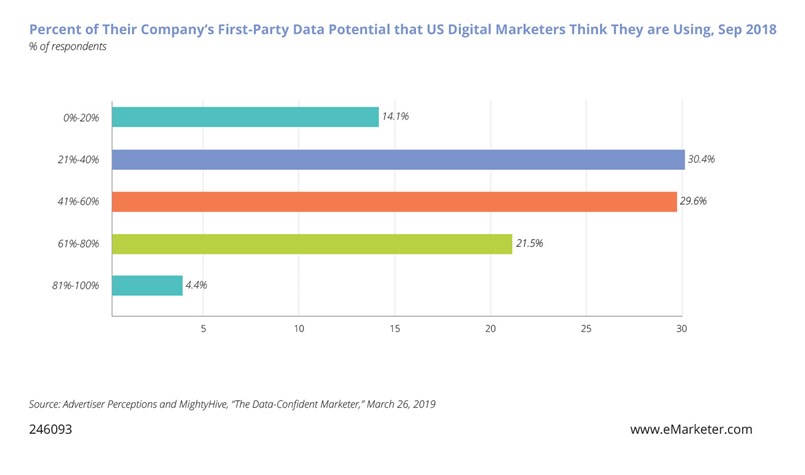Sign up for our LAVY email
and get our bi-monthly newsletter.
It’s a jungle out there when it comes to protecting personal information from unscrupulous hackers intent on harming education industry marketers who advertise online—or their students.
There is a safe way to generate leads which both protects consumer privacy and utilizes ethical data management: programmatic advertising.
If a college, trade school, vocational or tech school website collects personal information without the protection of a secure socket layer (SSL) certificate, for example, they unnecessarily put prospective students at risk when they fill out a request for information (RFI) form. Skipping the SSL is also a good way for a school to unintentionally risk having its website hacked by database injections if it happens to rely on one of the popular content management systems such as WordPress or Drupal.
 So, however you direct marketing leads to your RFI form, the first step to ensuring privacy and data management means making sure your website is safe to visit and performs form transmissions securely.
So, however you direct marketing leads to your RFI form, the first step to ensuring privacy and data management means making sure your website is safe to visit and performs form transmissions securely.
Of course, a secure school website is much more than just adding an SSL certificate to encrypt information sharing. It also means deploying Web application firewalls and other security protections. Admittedly, we're not the experts in online security, so be sure to check with your technology team to ensure nothing is missed.
Yes, we realize that the goal of your programmatic campaign is to deliver qualified leads to your student enrollment counselors. This includes names, interests and contact information.
In the lead generation phase, however, programmatic advertisers should never collect or touch PII. Let us repeat that. The only information programmatic advertisers should use is aggregate data. This protects you from being liable for data breaches. It also helps you reach exactly who you need without ever touching personal data or risking violating anyone’s privacy.
These days, with the European Union’s General Data Protection Regulation (GDPR) enacted in May 2018, protecting privacy isn’t a “nice-to-have” step. If you do business outside of the United States, as many schools with international recruiting programs do, it’s a legal requirement to inform website visitors what information you collect, how you collect it (using cookies, etc.) and how you plan to use it.
Initially, some marketers were hesitant to adopt the GDPR in the United States before it becomes a requirement here. The concern was that it might prevent consumers from using websites or filling out forms. It turns out, however, that the EU’s privacy law’s impact has been minimal. After its first year, consumers have become accustomed to clicking on privacy notices when visiting websites. Besides, it’s coming to America soon as California leads the way with the California Consumer Privacy Act (CPPA). So it’s best to be prepared.
With all of the issues surrounding privacy, you might wonder how a post-secondary education marketer like yourself can turn purchased or collected lead information into aggregate data.
The secret is, you don’t.
That’s a task best handled by a third-party identity resolution provider such as LiveRamp or Amperity. They can process the information in your Customer Relationship Manager (CRM) to strip out personal information so a programmatic trading desk can target specific demographics without ever having access to a single student’s name, email address or phone number.
Aside from making it possible for you to target leads with precision, using an identity resolution provider releases you from the responsibility and associated liability tied to protecting privacy.
While identity resolution providers have ultimate responsibility for proper data management, the first step belongs to those who collect information contained in school CRMs. They won’t accept information if those who provided it didn’t opt in properly.
If you are in compliance with the GDPR or the CPPA, you rest assured that getting your data accepted won’t be an issue.
From there, it’s actually rather simple. Your matched CRM data now converted to first-party anonymized data points will be pushed to the Data Management Platform (DMP) your trading desk uses and matched to existing device IDs. Your programmatic campaign manager can leverage the aggregated first-party data in the DMP to target that audience or build a look-alike audience to find additional potential students with similar traits and behaviors.
Speaking of targeting, it’s important to fish with both a specifically baited hook and a large net if you want to catch every possible lead. That’s because targeting overly broadly will definitely bring in some qualified leads, but it will also reach many people who aren’t.
And when you target too closely, you lose out on reaching leads who don’t strictly fit your persona based on errors in their digital footprint. Potential students who use a family computer, for example, can generate a digital profile which includes information from every person in the household. The data can be incredibly inaccurate.
By factoring in these imperfections, balanced programmatic targeting can ensure that you reach as many highly qualified eyeballs as possible.
We could go into the gritty details of how it works, but rest assured that PII is not involved when visitors to your site see an ad for your school or education program after visiting another site (related or not) that uses cookies. One such action could result in them being placed in 10 or more different audience pools based on any number of combinations of data points including age, education level, income bracket, where they live, marital status and more.
Someone whose behavior has identified them as being in the market for a Master of Business Administration (MBS) degree, for example, will be included in third-party data segments which a trading desk can target with ads for schools offering an MBA program.
To be clear, you don’t need to use cookies on your website to benefit from them. The magic all takes place behind the scenes, so you can focus on crafting the best message to attract the market segments your school needs most.
Ready to use programmatic ads to boost your student enrollment? LAVIDGE has worked with numerous educational institutions from colleges to advocacy organizations. Our programmatic agency can help you too.
To learn more, give us a call at 480.998.2600 or send email to [email protected].

Sign up for our LAVY email
and get our bi-monthly newsletter.